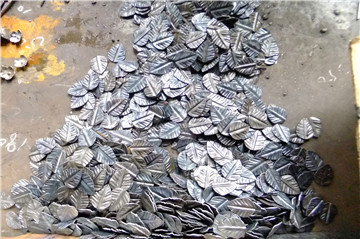Is wrought iron a composite material?
Views: 663 Update date: Oct 12,2023
Wrought iron, with its rich history and ornate beauty, has captivated the hearts of many. As a material used in everything from architectural marvels to timeless works of art, it exudes an air of mystique. One question that often arises is whether wrought iron can be classified as a composite material.
Composition of Wrought Iron: Wrought iron is primarily composed of iron, with a very low carbon content (typically less than 0.08%). It also contains minute quantities of other impurities, including sulfur and phosphorus. Its name, "wrought," comes from the past tense of the verb "to work," and this name perfectly describes the laborious process involved in shaping wrought iron.
Wrought Iron: Not a Composite
Wrought iron is not considered a composite material. A composite material is typically composed of two or more distinct substances that are combined to enhance specific properties, such as strength, durability, or weight. Wrought iron, on the other hand, is fundamentally a single material: iron.
The Inclusion of Slag: Wrought iron does contain slag inclusions, but these are not intentionally added as composite components. Slag is a byproduct of the iron smelting process and is present in wrought iron due to the historical methods used in its production.
These slag inclusions, which are often visible as dark, thread-like lines in wrought iron, give it a unique appearance and texture, making it easily distinguishable from other iron materials.

The Craftsmanship of Wrought Iron
The distinction of wrought iron lies not in its status as a composite material but in the artistry and craftsmanship involved in its creation. Skilled blacksmiths have historically employed labor-intensive processes to heat, shape, and manipulate wrought iron into intricate and elegant designs.
Enduring Beauty: Wrought iron's transformation through craftsmanship is what makes it an enduring choice for decorative and structural applications. Its malleability and distinctive appearance have made it a favorite for creating intricate designs that withstand the test of time.
While wrought iron is not a composite material in the traditional sense, it is a remarkable material with a unique history and a strong presence in the world of art and architecture. Its composition may be primarily iron, but its enduring beauty and distinctive texture are a result of the craftsmanship and the inclusion of slag, not the intentional combination of different materials. Wrought iron stands as a testament to the artistry of those who work with it, creating timeless pieces that continue to captivate our imaginations.
Prev News: Simen Metal: Your Reliable Wrought Iron Supplier
Next News: What are characteristics of wrought iron?

